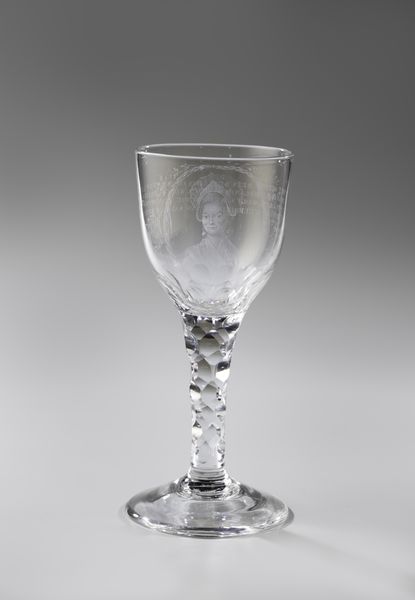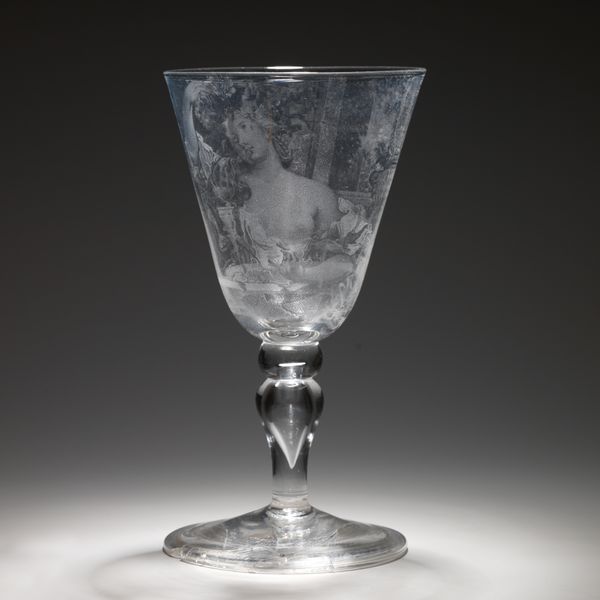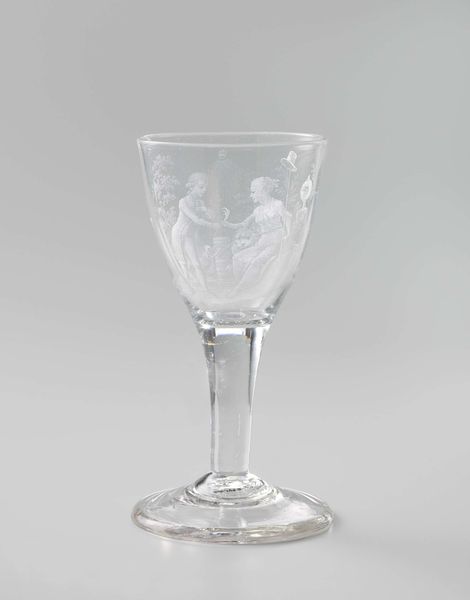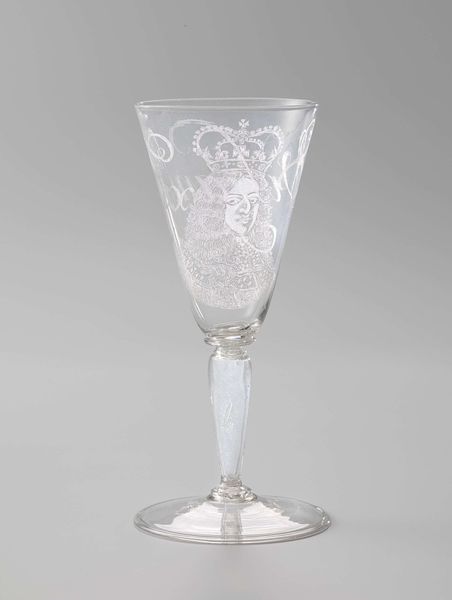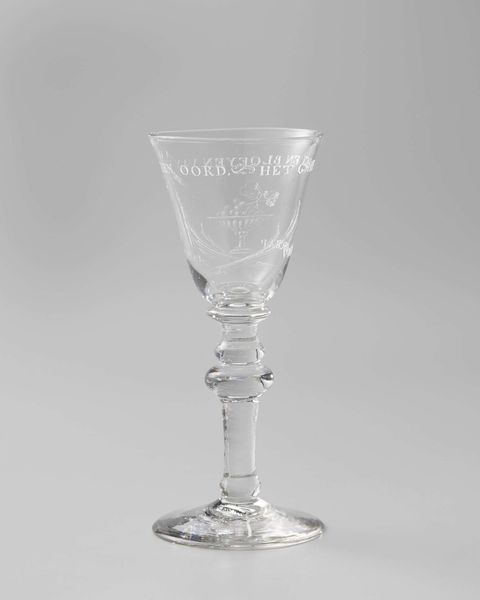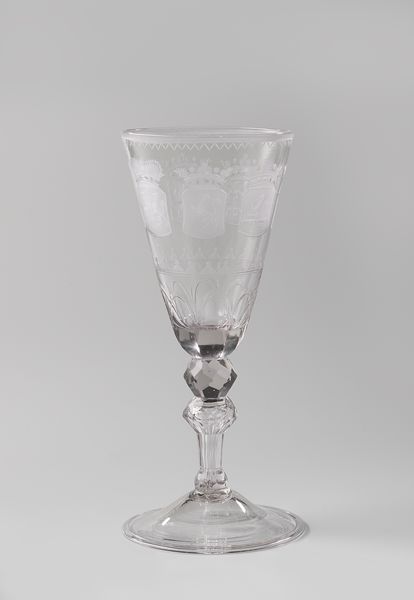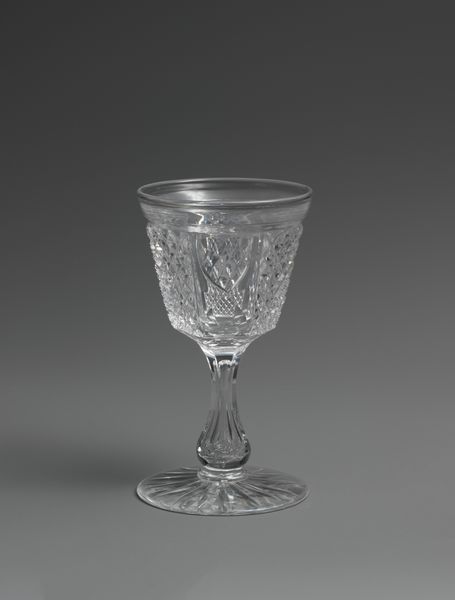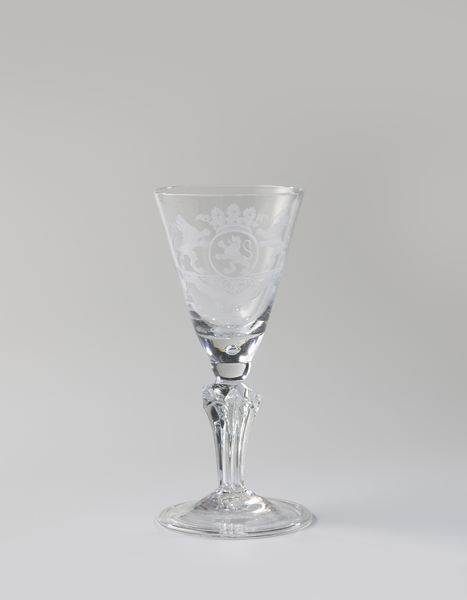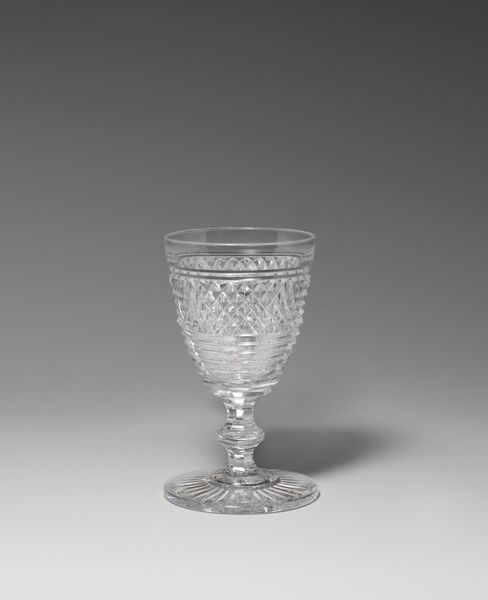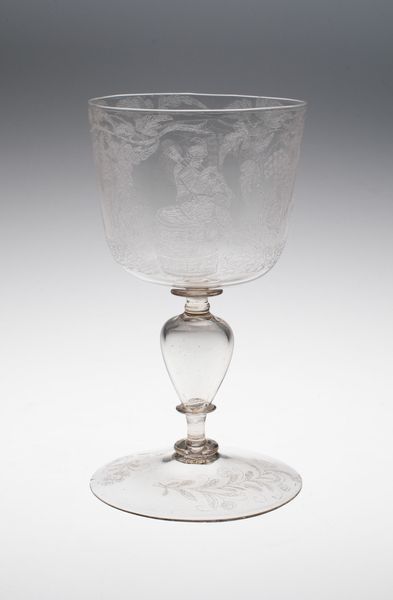
glass, engraving
#
portrait
#
baroque
#
glass
#
genre-painting
#
engraving
Dimensions: height 20.7 cm, diameter 9.2 cm, diameter 9.1 cm
Copyright: Rijks Museum: Open Domain
Curator: Editor: So, this is "Kelkglas met een lachende man met berkenmeier," or a goblet with a smiling man, created anonymously around 1743. It's engraving on glass. What immediately strikes me is the humor and the everyday nature of it—like a snapshot of daily life immortalized in a fragile object. What do you see in it? Curator: It’s fascinating to consider the labor involved in creating such an object. This wasn’t just a glassmaker; it was someone skilled in engraving too. It points to a hierarchy of artisanal production. Someone meticulously etched this design onto the glass, presumably for a wealthy patron. What do you think that tells us about the consumption of art objects at that time? Editor: Well, the fact that it’s on a goblet suggests it was intended for use, for pleasure, not just for display. Maybe it reflects a growing middle class who could afford these luxury goods depicting ordinary people? Curator: Precisely. It challenges our traditional notions of ‘high art.’ It uses genre painting, usually reserved for canvas, and applies it to a functional, everyday object. How does thinking about its function and the labour behind it change how you see the ‘art’? Editor: It makes it less precious, in a way. It connects it to the world of craft and labour, rather than some rarefied sphere of artistic genius. It is also amazing that is anonymous. Curator: Exactly! The value wasn’t solely placed on the ‘artist’ but on the skill, the material, and its function. So much for us to still think about nowadays! Editor: I hadn't considered the economic side of art objects, particularly labor and social status implications of this goblet. Thank you for sharing! Curator: And thank you for making me consider the utility of this type of “art,” Editor.
Comments
No comments
Be the first to comment and join the conversation on the ultimate creative platform.
